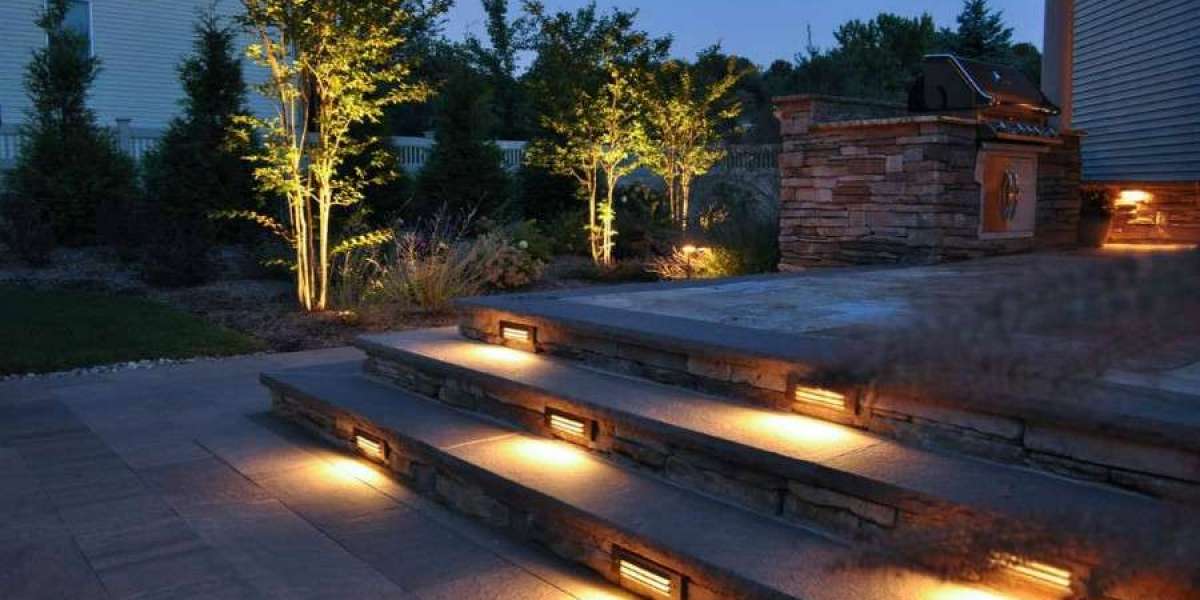Outdoor lighting plays a crucial role in enhancing the aesthetics, safety, and functionality of any landscape. Whether you're looking to create ambiance for your patio, increase security around your property, or highlight key features of your garden, choosing the right type of outdoor lighting is essential. However, with so many options available, it’s important to weigh the pros and cons of each to make the best decision for your needs.
In this post, we’ll discuss the different types of outdoor lighting, along with their benefits and potential drawbacks, helping you make an informed choice for your outdoor space.
Why Outdoor Lighting Matters
Outdoor lighting serves multiple purposes for homeowners. From illuminating pathways and driveways to providing security and highlighting landscaping features, well-designed lighting can make a significant difference. In Baton Rouge, LA, where homeowners often enjoy their outdoor spaces well into the evening, selecting the right outdoor lighting solutions can enhance your yard’s usability and safety.
Before diving into the types of outdoor lighting, let’s take a look at the key reasons why outdoor lighting is essential:
Safety and Security: Proper lighting helps prevent accidents by illuminating walkways, stairs, and entrances. It also deters potential intruders by lighting up dark areas around your home.
Aesthetic Appeal: Well-placed lighting can highlight architectural features, plants, or water elements, creating a visually appealing nighttime landscape.
Extended Usability: Outdoor lighting allows you to enjoy your yard, patio, or garden even after sunset, extending the functionality of your outdoor space.
Now, let’s explore the different types of outdoor lighting options and evaluate their pros and cons.
1. LED Lighting
Pros:
Energy Efficiency: LED lights are known for their exceptional energy efficiency. They use a fraction of the electricity that traditional incandescent bulbs require, making them a cost-effective option for outdoor lighting.
Longevity: LED bulbs can last for up to 50,000 hours or more, reducing the need for frequent replacements.
Versatility: LED lights come in a wide range of colors and designs, allowing for creative and customizable lighting solutions. They can be used for landscape lighting, accent lighting, and even string lights for patios.
Low Heat Emission: LED lights emit very little heat, making them safer for use in close proximity to plants and other sensitive elements of your landscape.
Cons:
Higher Initial Cost: LED lights are more expensive upfront compared to traditional bulbs, though their long lifespan and energy savings offset this cost over time.
Directional Lighting: Some LED bulbs produce directional light, meaning they shine light in a specific direction rather than illuminating a broad area. This can limit their usefulness for large, open spaces unless specific fixtures are used.
2. Solar-Powered Lighting
Pros:
Environmentally Friendly: Solar lights are powered by the sun, making them an eco-friendly option for outdoor lighting. They require no electricity and produce zero emissions.
Low Operating Costs: Since solar lights don’t rely on the electrical grid, they offer virtually no ongoing costs after installation.
Easy Installation: Solar lights don’t require any wiring, which makes them easy to install in remote or hard-to-reach areas of your yard.
Cons:
Weather Dependent: Solar-powered lights rely on sunlight to recharge, meaning they may not work as well on cloudy days or during seasons with limited sunlight. This can lead to inconsistent performance.
Limited Brightness: Solar lights typically offer lower brightness levels compared to electric options, which may not be sufficient for areas requiring strong illumination, such as driveways or security lighting.
Battery Lifespan: Solar lights come with rechargeable batteries that may need to be replaced over time, especially if they’re exposed to harsh weather conditions.
3. Incandescent Lighting
Pros:
Warm Light: Incandescent bulbs produce a warm, yellow-toned light that creates a cozy and inviting atmosphere, making them ideal for outdoor spaces like patios and gardens.
Low Initial Cost: These bulbs are inexpensive to purchase, making them an affordable option for outdoor lighting installations.
Cons:
High Energy Consumption: Incandescent bulbs are not energy-efficient. They consume a significant amount of electricity and have higher operating costs compared to alternatives like LEDs.
Short Lifespan: Incandescent bulbs have a relatively short lifespan, typically lasting only 1,000 to 2,000 hours. This means they require frequent replacements, which can be inconvenient and costly.
Heat Generation: These bulbs produce a lot of heat, which can be problematic for outdoor areas where they’re in close proximity to plants, decorations, or people.
4. Halogen Lighting
Pros:
Bright and Clear Light: Halogen bulbs provide a bright, clear light that is ideal for illuminating pathways, driveways, and other areas where strong illumination is required.
Compact Size: Halogen bulbs are typically smaller than incandescent or LED bulbs, which allows for more design flexibility when incorporating them into outdoor lighting fixtures.
Cons:
Energy Inefficiency: While halogen bulbs are more efficient than traditional incandescent bulbs, they still consume more electricity than LEDs or solar-powered lights.
Heat Emission: Like incandescent bulbs, halogen lights emit a significant amount of heat. This can be a safety concern, especially if the lights are placed near plants or areas with heavy foot traffic.
Shorter Lifespan: Halogen bulbs have a shorter lifespan compared to LED bulbs, meaning they need to be replaced more frequently.
5. Low-Voltage Lighting
Pros:
Safety: Low-voltage lighting operates at a safer voltage (usually 12 volts), reducing the risk of electrical shock or accidents. This makes it a great option for homes with children or pets.
Energy Efficiency: While not as energy-efficient as LEDs, low-voltage lighting consumes less energy than traditional incandescent lighting, making it a cost-effective option.
Flexibility: Low-voltage lighting systems are highly customizable and can be easily adjusted to fit your landscape’s needs.
Cons:
Requires a Transformer: Low-voltage lighting systems require a transformer to convert the standard household voltage into the low voltage needed to power the lights. This adds an extra component to the installation process.
Limited Brightness: Low-voltage lighting is not as bright as high-voltage options, which may make it less suitable for areas that need strong illumination, such as security lighting.
Choosing the Right Outdoor Lighting for Your Landscape
When selecting outdoor lighting for your home in Baton Rouge, LA, it’s essential to consider your needs, budget, and aesthetic preferences. Here’s a quick breakdown to help guide your decision:
For energy efficiency and long-term savings, LED lights are the top choice. They offer versatility and longevity, making them ideal for various lighting applications.
If you want an eco-friendly option, solar-powered lights are perfect for areas that receive plenty of sunlight. However, their performance may fluctuate depending on weather conditions.
For a warm and inviting atmosphere, incandescent bulbs are a budget-friendly choice, though they require more frequent replacements and consume more energy.
If you need bright, focused lighting, halogen lights provide the necessary brightness but are less energy-efficient.
For safety and flexibility, low-voltage lighting systems offer a customizable solution with lower energy consumption.
FAQs About Outdoor Lighting
Q1: What is the most energy-efficient outdoor lighting option?
LED lights are the most energy-efficient option for outdoor lighting, offering significant savings on electricity and lasting much longer than other types of bulbs.
Q2: Can I use solar lights in shaded areas?
Solar lights need direct sunlight to charge effectively, so they may not work as well in shaded areas or during overcast weather. For shaded areas, consider low-voltage or LED lighting instead.
Q3: How long do outdoor lighting systems last?
The lifespan of outdoor lighting depends on the type. LED bulbs can last up to 50,000 hours, while incandescent and halogen bulbs may need to be replaced more frequently (after about 1,000-5,000 hours).
Q4: Do outdoor lights attract insects?
Certain types of outdoor lighting, such as incandescent bulbs, can attract insects. LED lights, especially those with warmer color tones, tend to attract fewer bugs.
Q5: Can outdoor lighting be used year-round in Baton Rouge, LA?
Yes! Outdoor lighting is designed to withstand various weather conditions, and many lighting systems are suitable for year-round use in Baton Rouge, which has a relatively mild climate.
Conclusion
Choosing the right outdoor lighting for your home requires careful consideration of energy efficiency, lighting needs, and aesthetics. Whether you're looking to highlight your landscape or improve security, each type of outdoor lighting has its own set of advantages and drawbacks. For expert advice on selecting the best outdoor lighting for your property, contact All Seasons Landscaping & Lawn Care at 225-276-8658 today. They serve the Baton Rouge area and are ready to help you illuminate your landscape beautifully!








